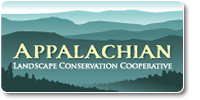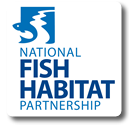Channel, Bank, & Riparian Restoration to Improve Habitat and Water Quality in Kings River, AR
| Project Start Date | |
|---|---|
| Project Leader | |
| Organization |
The natural course and riparian corridor of the Kings River have been significantly modified by various landowners over several decades, leading to channel instability and decreased habitat and water quality. The Nature Conservancy (TNC) purchased a preserve on the Kings River that includes nine miles of river. To protect and restore river and riparian habitat, TNC has created a stream channel and floodplain restoration project along 0.5 miles of the river.
Background Information
The Kings River is an extraordinary resource for both anglers and managers alike. Home to a variety of species, the Kings River provides recreational activities such as fishing, paddling, and hiking. Not only that, but the Kings River flows into Table Rock Lake, a significant interstate drinking water source. For these reasons, the river has been designated by the state of Arkansas as an Extraordinary Resource Waterbody (ERW) and an Ozark Zone Quality Stream for smallmouth bass. In addition, the Nature Conservancy considers the Kings RIver to be an ecoregional priority watershed due to its rich aquatic biodiversity. However, the natural course and riparian corridor of the Kings River have been significantly modified by various landowners over several decades, leading to channel instability and decreased habitat and water quality. In some places, the river has been rerouted or berms have been constructed, disallowing the river from accessing its floodplain during bankfull (1-2 year interval) floods. This factor, along with clearing of riparian vegetation, has contributed to a destabilized river channel and stream banks.
The Nature Conservancy (TNC) recently purchased a preserve on the Kings River that includes nine miles of river. To protect and restore river and riparian habitat, TNC proposed to design and implement a stream channel and floodplain restoration project along 0.5 miles of the river with the objective of improving the viability of aquatic species. To achieve this goal, TNC set out to improve water quality and habitat by restoring riparian forest, stabilizing the river channel and eroding stream banks, and increasing floodwater access to the floodplain.
A major component of the project was to stabilize a 400 foot long stream bank along a portion of the Kings River known as Mason Bend. The pool at Mason Bend is one of the most iconic, well-known, and visited spots for paddlers and fishermen who float this section of the river.
Completed
Construction
Toe wood
 Construction of the 300ft section of toe-wood along the streambank occurred from October 1st to October 10th. Excavation and construction of toe-wood was completed in sections.
Construction of the 300ft section of toe-wood along the streambank occurred from October 1st to October 10th. Excavation and construction of toe-wood was completed in sections.
This activity began with the excavation of the bank soil material. Root-wad logs were placed on top of the foundation logs, perpendicular to them . Medium sized logs (‘cross logs’) were placed along the back side of the root wads parallel to the foundation logs to help keep fill material away from the root wads. Hardwood tree slash was then placed on the root-wad logs followed by cedar slash. This helps to fill the void between the root-wad logs and to later prop up fill material. It also helps to maintain aquatic habitat within and under the toe-wood structure by preventing the voids between logs from filling in with fill gravel and soil material. Fill gravel and soil was then placed over the woody material to construct the first bench. The material was placed by excavator or dozer, and then graded by dozer. The final elevation was checked using a construction laser.
Stone J Hook
The structure was built in two vertical layers. Larger, more bulky stones were set as footers, with an upstream facing angle on the top of the rock. The top layer was constructed of flatter rock, holding a similar upstream angle. Because the standing water surface in the worksite was at about 986.5 ft., most of the structure was constructed under water. Water quickly became murky with any construction disturbance, so most of the j-hook was constructed ‘in the dark’ by feeling the channel bottom or placed rock with the excavator bucket. The elevations of placed rocks were occasionally checked with construction laser. Following the construction of the toe wood and J hook, the channel and gravel bar was shaped, and the channel bank and beaches were stabilized.
Post Construction Planting
In January 2013, approximately 600 willow and sycamore cuttings were planted on the site. These were primarily planted on the three wrapped terraces. All cuttings were collected on the TNC Kings River Preserve. TNC contracted with a tree planter to plant approximately 30 acres of floodplain pasture adjacent to the stream bank stabilization site. In November 2012, the contractor mechanically ripped and treated tree rows Trees were planted in January and February 2013. Tree rows are visible in Figure 2-15. Approximately 15,000 trees were planted at the site. Initial survival rates appear to be favorable.
Monitoring
Monitoring of streambank stabilization project in August 2013 shows no evidence of continued erosion at the project site. Deposition of fine substrates is evident on several constructed bench features.
Associated Locations
| Town | zip code | county | state | congressional dist |
|---|
Barriers
| Name of barrier | Latitude | Longitude | FONS ID | FIS Project ID | FWS Acc. # |
|---|
Document Actions










